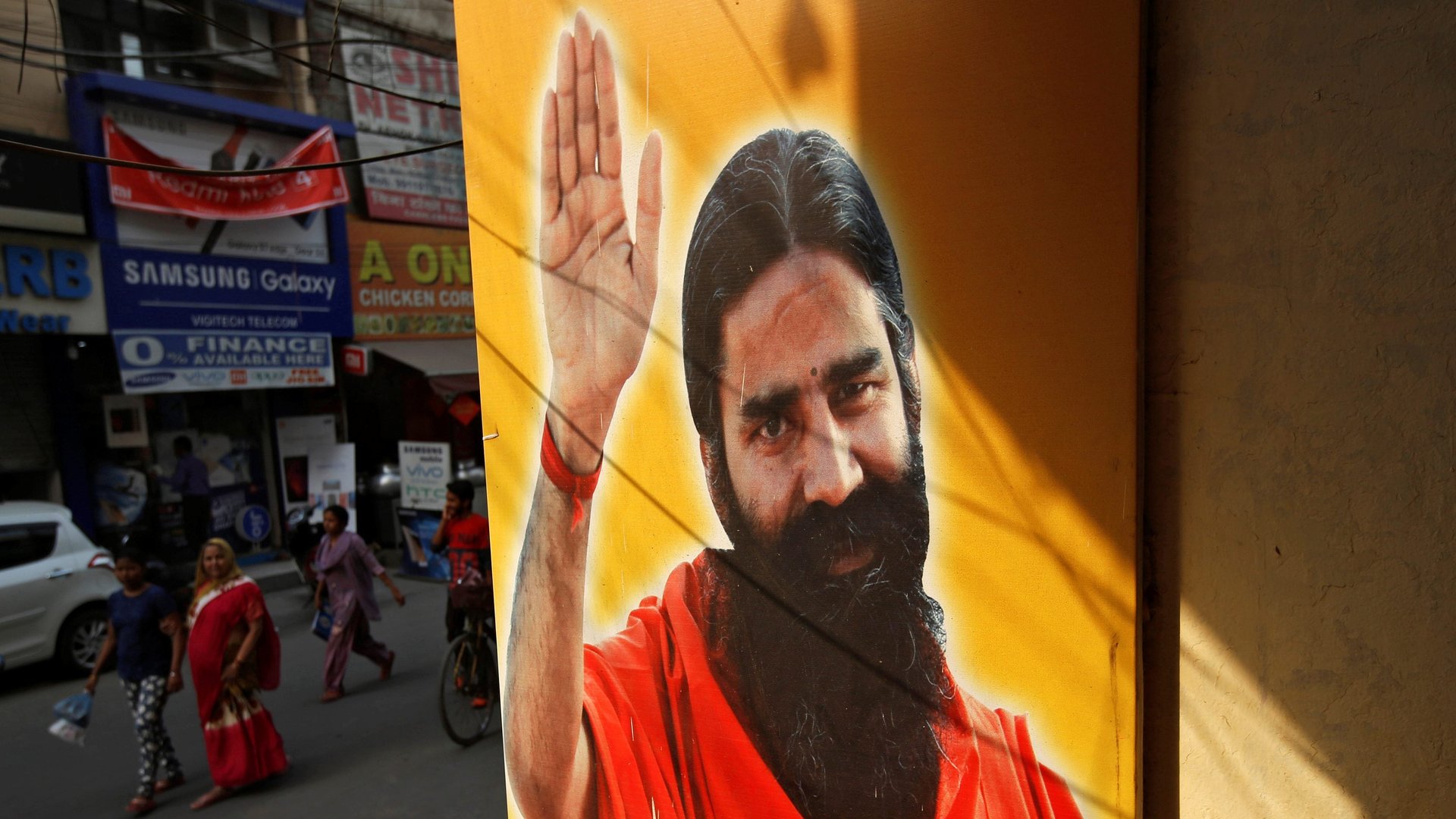Patanjali’s big online retail move is all about a $6 billion prize
Patanjali Ayurved is firing a new salvo—this time online.


Patanjali Ayurved is firing a new salvo—this time online.
Last week, the yoga guru Ramdev-led Ayurveda major announced its tie-up with eight e-commerce majors—Amazon, Flipkart, Paytm, Snapdeal, Grofers, Shopclues, BigBasket, and 1MG—to carpet-bomb the internet with its products. The idea is to capture a bigger slice of India’s $1 billion online market for fast-moving consumer goods (FMCG), estimated to grow six-fold in the next three years.
Patanjali’s move could help it leapfrog into towns and cities that its brick-and-mortar stores haven’t hitherto covered. While other firms have taken measured steps on the web, Patanjali is now getting aggressive on the internet.
It’s easy to understand why.
Internet FMCG sales currently stand at over $1 billion in India, a fraction of the overall market. However, in the next three years, the segment is expected to generate up to $6 billion in sales, according to a September 2017 report by Google and the Boston Consulting Group. In fact, the report estimates that over 10% of the overall FMCG growth could come from the internet.
Ramdev’s firm, which has steadily expanded its influence on Indian households over the last few years, could do with flexing its distribution muscle as it takes on the likes of Hindustan Unilever (HUL) and Colgate-Palmolive. Alongside, it has an ambitious goal of doubling its turnover to Rs20,000 crore in the financial year 2018.
Currently, Patanjali retails its products through one million stores, reaching an estimated 100 million Indian households. Of these, 43% are actually “Patanjali households“—those that buy at least three categories sold by the brand. It also sells its products online through third-party sellers and distributors, besides its own website.
However, Patanjali lacks the reach of other FMCG majors, especially compared to HUL, India’s largest consumer goods maker. India’s billion-plus population is serviced by over 8 million retail outlets scattered across urban and rural India. ITC alone reaches over 4 million of these, while HUL sells through 6.3 million.
So e-commerce could help bridge Patanjali’s distribution gaps to a large extent.
“This (e-commerce) reach is one of the ways they will move to the next level of distribution and reach pin codes they still haven’t reached through physical stores,” N Chandramouli, CEO of TRA, a brand consultancy, told Quartz. Given the brand’s wide range of products, supermarkets that can stock all its varieties are best suited to Patanjali, reckons Chandramouli. “And there is no better supermarket to display its range of products than e-commerce,” he added.
Meanwhile, Indian e-tailers have been looking at groceries as the next frontier. Last September, Amazon tied up with one of India’s oldest Ayurveda majors, Dabur, to make its products available across the online retailer’s global selling programme. Goods of daily use are “one of the fastest growing categories and biggest in terms of volume,” according to Saurabh Srivastava, Amazon India’s director of FMCG (category management).
Patanjali’s alliance, therefore, could be a win-win for everyone involved. “Clearly, all of them (e-commerce companies) know the volumes that a brand like Patanjali is capable of generating and, therefore, no one wants to miss out on the opportunity,” Chandramouli added.